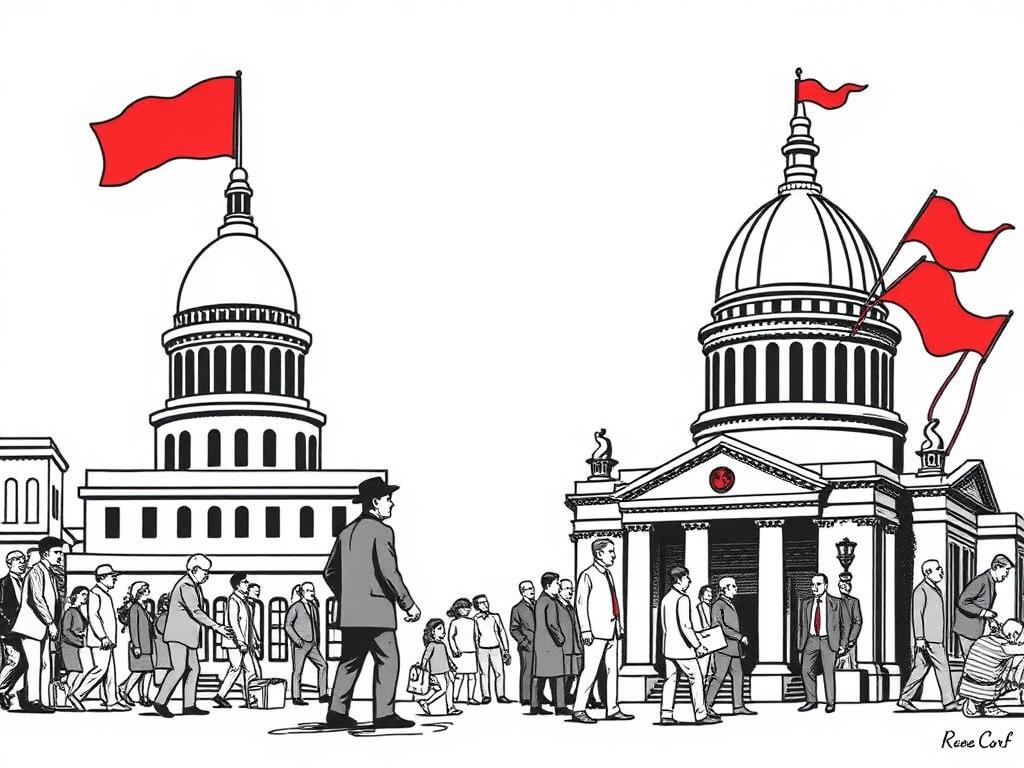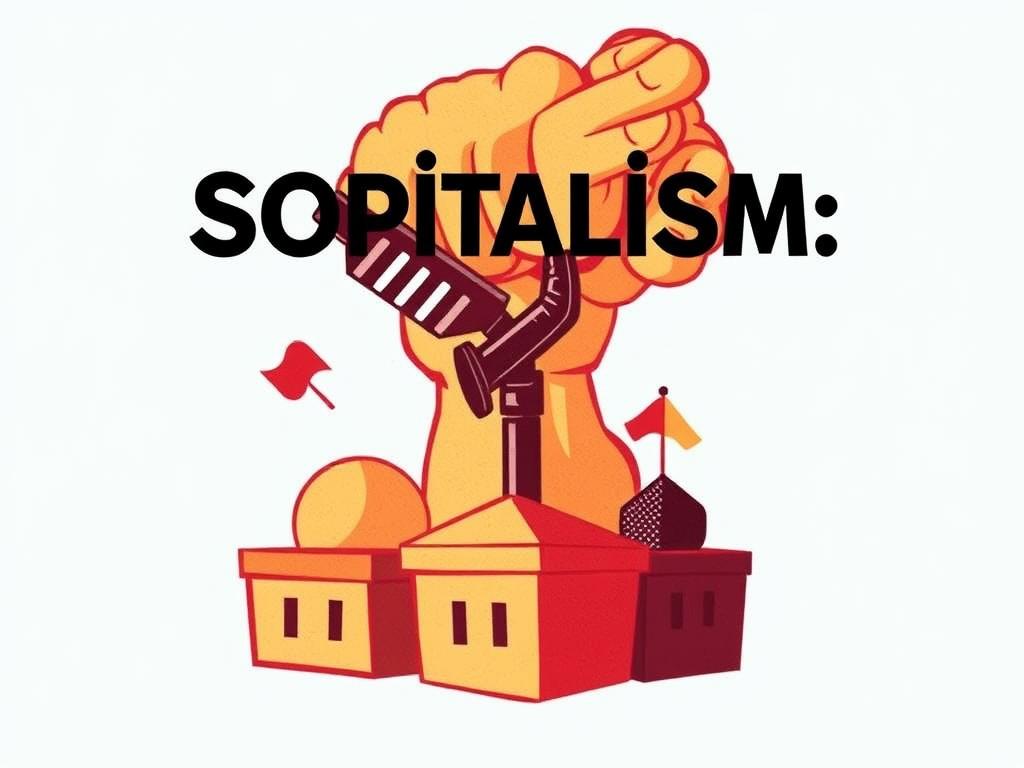Capitalism vs. Socialism: Different Approaches to Capital
When we talk about economic systems, two of the most debated and contrasting frameworks come to mind: capitalism and socialism. Both of these systems offer different philosophies on how capital should be managed, distributed, and utilized to promote growth and welfare within a society. Whether you’re a student trying to wrap your head around the concepts or simply curious about how these frameworks shape our world, understanding their core differences is key. In this article, we’ll dive into the nuances of capitalism and socialism, comparing their approaches to capital and what that means for everyday people.
What Is Capitalism?
Capitalism is an economic system centered on private ownership of capital and the means of production. Here, individuals and businesses have the freedom to invest, produce goods, and offer services with the goal of making a profit. The market plays a critical role, driven by supply and demand forces, determining prices and production levels. Capitalism values competition, innovation, and personal enterprise, believing that when individuals pursue their own interests, society as a whole benefits through increased wealth and progress.
An essential feature of capitalism is the private ownership of capital — this could be factories, machinery, or even intellectual property. People can accumulate wealth, invest in new ventures, and enjoy the fruits of their labor. Governments typically keep a hands-off approach, intervening only to maintain law and order or regulate unfair practices. This system encourages risk-taking but can also lead to inequalities, as some individuals or corporations may accumulate vast amounts of capital while others have less access.
Capitalism: Key Characteristics
- Private ownership of capital and businesses
- Market-driven economy with minimal state intervention
- Individual profit motive and competition
- Wealth accumulation and reinvestment
- Innovation encouraged through competition
Understanding Socialism’s Take on Capital
Socialism, on the other hand, offers a fundamentally different approach to capital. Rather than private ownership, socialism advocates for collective or state ownership over key industries and resources. The idea is to reduce economic inequality and ensure that wealth benefits society as a whole, not just a few individuals. Capital under socialism is often controlled or managed by the government to redistribute resources more fairly and provide social services such as healthcare, education, and housing.
Instead of competition driving progress, socialism emphasizes cooperation and planning. The goal is to meet everyone’s needs reasonably and ensure basic standards of living for all members of society. While private property and small business ownership can exist in some socialist models, the main capital assets tend to be under collective control or rigorous regulation. This approach attempts to address the flaws of capitalism, such as economic disparity and cyclical crises, by prioritizing shared welfare over individual profit.
Socialism: Defining Features
- Collective or state ownership of major capital assets
- Central planning or regulated markets
- Focus on equity and wealth redistribution
- Social welfare and public services prioritized
- Cooperation over competition
How Do Capitalism and Socialism Differ in Their Approach to Capital?

The primary divergence in capitalism and socialism lies in who controls capital and how it is used. This control reflects broader values about individual freedom versus collective responsibility, risk-taking versus security, and profit motives versus social welfare.
| Aspect | Capitalism | Socialism |
|---|---|---|
| Ownership of Capital | Private individuals and corporations | State or community |
| Economic Decision-Making | Market-driven by supply and demand | Planned or regulated economy |
| Profit Motive | Primary driver of production and investment | De-emphasized or replaced by social good |
| Wealth Distribution | Unequal, based on market outcomes | More equal, through redistribution |
| Role of Government | Limited, mainly to enforce laws and contracts | Extensive, managing resources and welfare |
Impacts on Society and Economy
In capitalism, because capital is largely in private hands, innovation can flourish since entrepreneurs are incentivized to create products and services that meet consumer demand. However, this can also result in significant inequalities—some accumulate vast wealth while others may fall behind. Capitalism’s cyclical booms and busts can sometimes lead to financial crises and social unrest.
Socialism’s focus on collective ownership and redistribution aims to create a more balanced society, where basic needs are met, and extreme poverty is minimized. On the downside, critics argue that limiting profit motives can reduce incentives for innovation, efficiency, and individual initiative. Also, managing capital centrally can sometimes lead to bureaucratic inefficiencies and lack of responsiveness to individual preferences.
Examples and Variations of Each System
It helps to look at real-world examples to better understand how capitalism and socialism operate in practice since no country follows these systems in their pure form.
Capitalism in Action
The United States is often cited as a prime example of capitalism. Here, private enterprise dominates the economy, with large multinational corporations and small businesses alike driving economic activity. The government intervenes through regulation but generally allows the market to function freely. This setup has driven massive economic growth and innovation, particularly in technology and finance, while also grappling with income inequalities.
Socialism Around the World
Countries like Sweden and Norway provide examples of democratic socialism or social democracy, where capitalist markets operate alongside robust social welfare systems. The state regulates key sectors, ensures universal healthcare, free education, and social security, reflecting socialist principles without fully eliminating private ownership. Cuba and North Korea represent more traditional socialist economies with extensive government control but face challenges with innovation and economic efficiency.
Mixed Economies: Bridging the Gap
Many modern economies incorporate elements from both capitalism and socialism to balance growth with equity. These mixed economies seek to harness the entrepreneurial spirit of capitalism while providing safety nets that prevent the worst social outcomes. Understanding the strengths and weaknesses of each approach helps societies craft policies aimed at sustainable and inclusive prosperity.
Why the Debate Continues

The debate between capitalism and socialism is not just about economics but also values, politics, and visions for society’s future. Proponents of capitalism argue that freedom to control capital leads to progress, innovation, and individual empowerment. Supporters of socialism emphasize social justice, reducing inequality, and sharing resources to uplift the many rather than the few.
This debate becomes particularly relevant during times of economic crisis, rising inequality, or environmental challenges. Questions arise about how capital should be used—not just for short-term profit but to address long-term societal needs. As economies evolve with technology and global interconnection, finding the right balance between these approaches remains a vibrant and crucial conversation.
Conclusion

In the tussle between capitalism and socialism, the different approaches to capital reflect deeper ideas about freedom, fairness, and the role of government. Capitalism prioritizes private ownership, competition, and profit, often driving innovation but with risks of unequal wealth distribution. Socialism favors collective control and redistribution, aiming to provide greater equity and security but sometimes at the expense of efficiency and incentive. Many countries today adopt blended models, combining the strengths of both systems to address contemporary challenges. Ultimately, understanding capitalism and socialism helps us appreciate the complex ways capital shapes our economy and society, encouraging informed discussions about the values and policies we want to guide our future.







